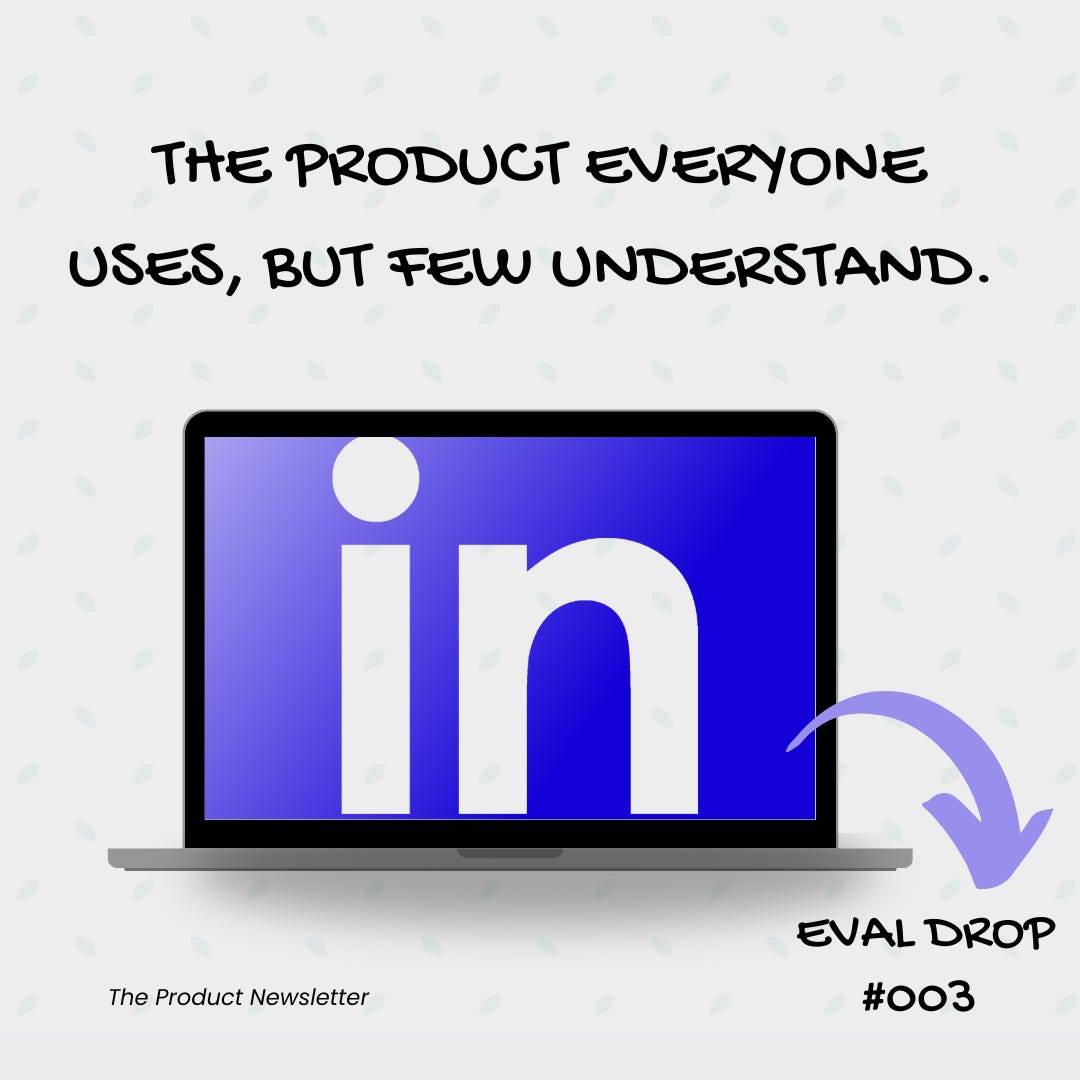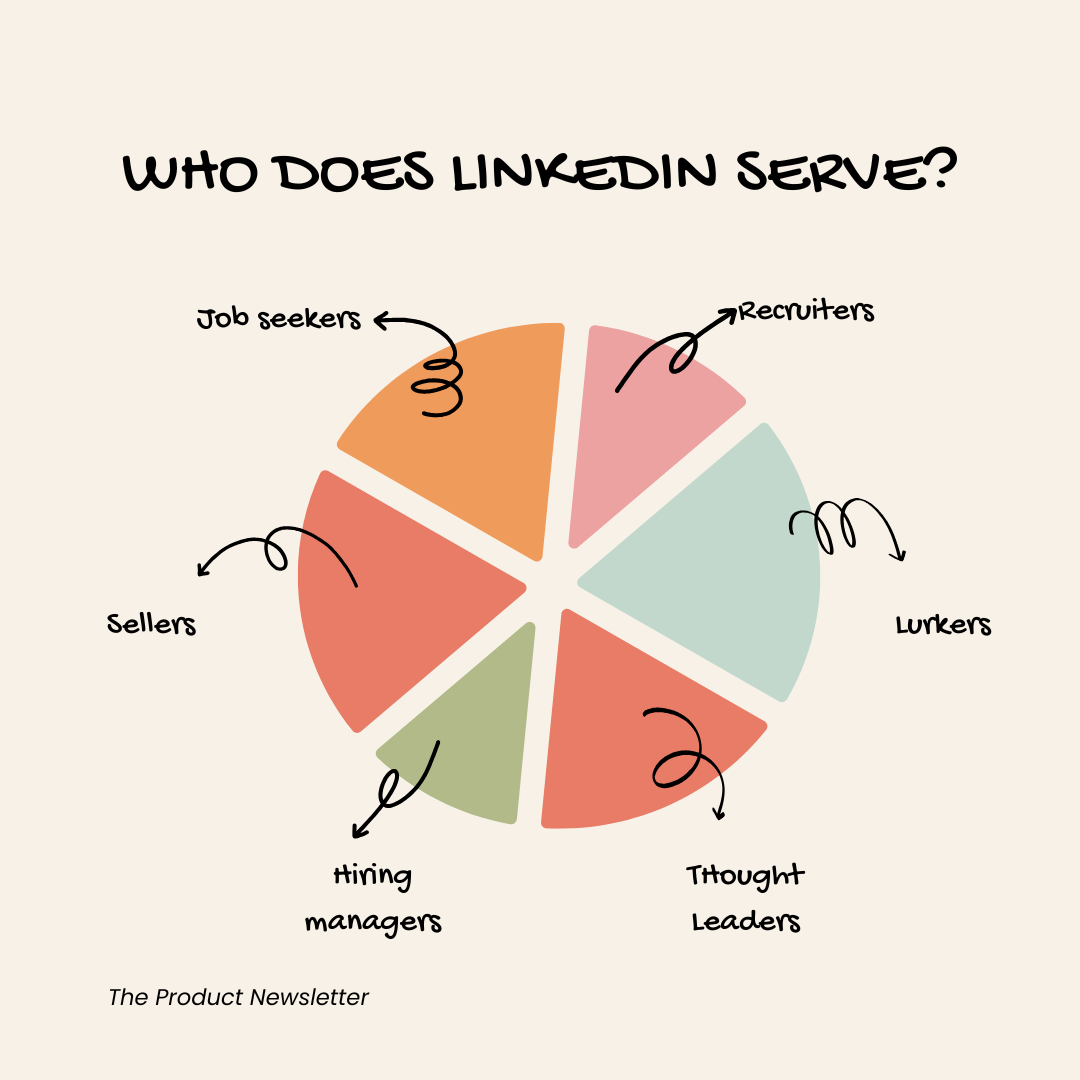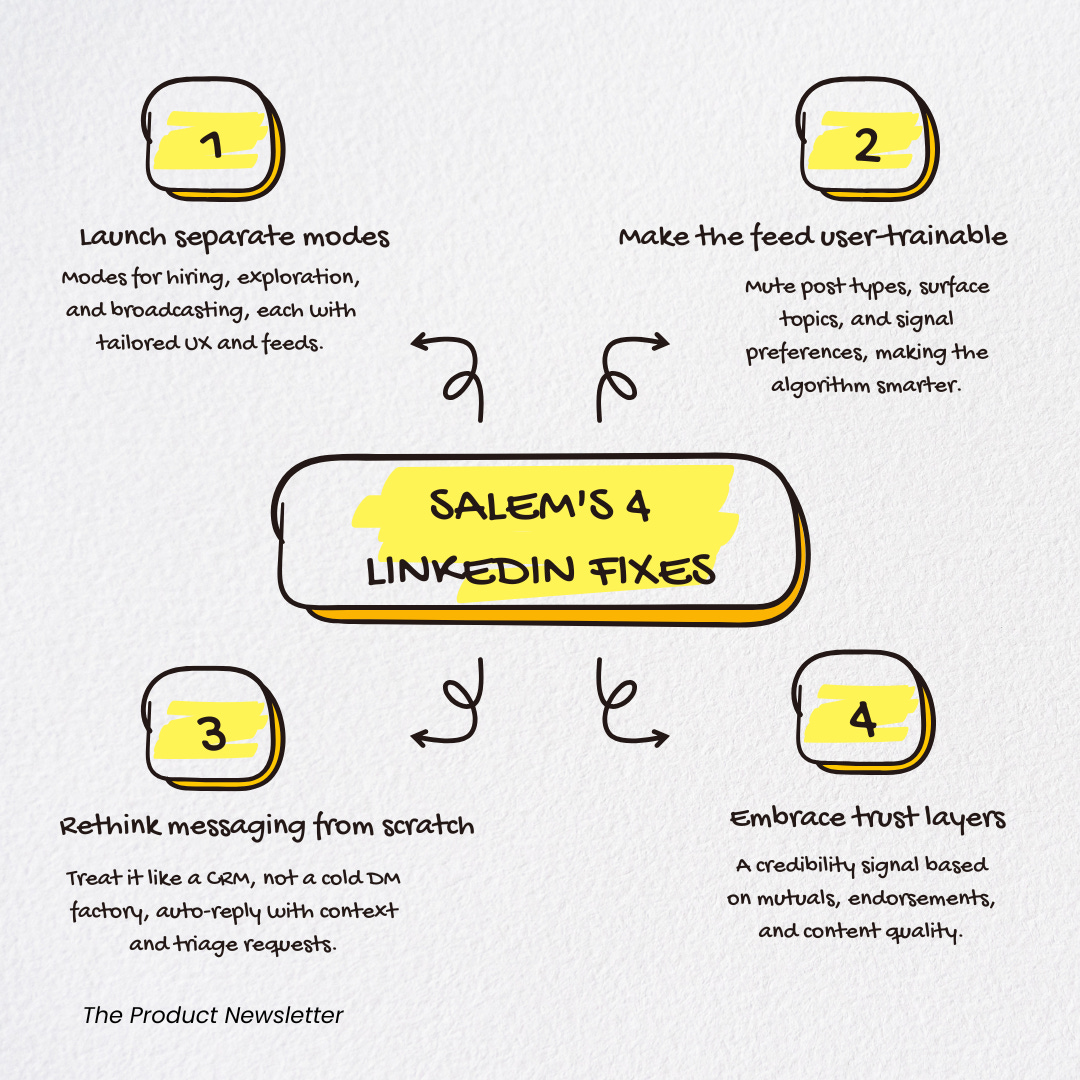Eval Drop #003: LinkedIn — More Than Just a Digital Résumé
This piece is a deep dive into the product mechanics, user personas, and growth loops that make LinkedIn a platform most people think they know, but don’t
Hi 👋! You are reading one of my free articles - I hope it helps you level up your PM skills. Want to go deeper? My premium subscribers get exclusive frameworks and strategies I don’t share anywhere else - content that has helped hundreds of product managers land better roles and make bigger impact.
Ready to accelerate your product career? Subscribe now for premium access and join a community of exceptional PMs gaining an edge every week.
Now, let’s dive into today’s insights…
Welcome to Eval Drop #003, part of a special weekly series I’m running through August.
Each week, I will break down a product millions of people use, not just to critique it, but to dissect its mechanics, surface its strategy, and show you how to think like the PM behind the screen.
If you are a PM, designer, or builder, these Evals aren’t just for insight; they are reps to sharpen your product brain.
If you want me to Eval your favorite product, drop your suggestion in the Subscriber Chat.
Now, let’s get into it.
LinkedIn: A Product of Contradictions
I like to think my introduction to LinkedIn was somewhat in late 2009; we all knew it as a source to connect with mentors we met in person, and where job updates were posted. At the time I lived in Nigeria, and I remember my close friend getting his job through a connection he made in the US.
As time went on, it became famously known as the bed for growing connections and ultimately ignoring DMs.
It was that place where folks were meant to be professional, yet the algorithm consistently rewarded performative vulnerability.
LinkedIn is a product built on tension.
And somehow, that tension hasn’t broken it; it’s made it dominant.
1. What It Is
LinkedIn is the platform for managing your professional identity. It’s part resume, part network, part content feed, part CRM. Now in August 2025, part videos.
And it’s backed by Microsoft, which gives it enterprise reach, distribution, and runway.
2. Who It Serves
Job seekers building visibility.
Recruiters with premium tools.
Sellers are using it as a warm outreach channel.
Hiring managers are scanning talent.
Thought leaders (real and self-declared) building an audience.
Lurkers are watching the whole circus quietly.
It’s a rare product that tries to serve all sides of a professional marketplace and mostly succeeds.
3. What It Gets Right
• Network-as-distribution
Every post has immediate reach via your connections. I have found that the built-in distribution is gold for creators and recruiters alike.
• Status-as-UX
From job titles, degrees, followers, etc., everything on LinkedIn is optimized to signal status. I firmly believe this is not accidental. It’s part of what makes people engage.
• Premium segmentation
If you are a premium subscriber, you’ll quickly discover that recruiters, salespeople, and job seekers all get targeted premium features. Largely, and obviously as a result of constant iteration, monetization is specific and focused, versus being bloated and directionless.
• Identity as anchor
Unlike Twitter or TikTok, people own their names here. That makes the content feel more accountable even when it’s cringe. If you write cringe, people can attach that trait to your name and do with that what they please.
4. What Still Feels Off
• The feed is messy
There is constant context switching required, which leads to some cognitive overload. Mixing life updates, thought leadership, brand fluff, and job posts in one feed leads to context collapse. There is no true personalization layer, and yet again, this seems like an intentional decision. I wonder how this translates to their needle-moving metrics.
• Incentives are unclear
What is the LinkedIn team optimizing for? It remains unclear. Is it about credibility or engagement? Career growth or content marketing? LinkedIn hasn’t chosen, so the experience is split.
• Too many knobs
It’s tough and disconcerting to focus. It feels like a fast-revolving door that might slam your head if you go through at your own pace. Hiring mode. Creator mode. Stealth mode. Sales Navigator. Learning. It’s a toolkit, not a product. The average user barely knows what’s under the hood.
• Messaging is broken
If I had a magic wand, this is what I would fix first. The DMs are a spam inbox masquerading as a networking tool. If you’re not a seller or recruiter, it’s mostly ignored.
5. What They're Optimizing For (My Take)
Time in feed (to show ROI for premium users and advertisers).
Post engagement velocity (likes/comments per hour).
Premium feature usage by segment (recruiters, sellers, etc.).
Identity completeness (they really want your birthday).
But the deeper optimization is subtle: LinkedIn wants to be your daily home for professional life, not just your resume host. This is why they are pushing videos, newsletters, learning, and more.
6. What I’d Do Differently
• Launch separate modes
A true “Hiring Mode,” “Exploration Mode,” and “Broadcast Mode,” each with tuned UX, notifications, and feed filtering.
• Make the feed user-trainable
Let me mute post types, surface topics, signal what I want more or less of. Right now, the algorithm is loud, but not smart.
• Rethink messaging from scratch
Why not let me auto-reply with context? Or triage inbound requests like email? Treat it like a professional CRM, not a cold DM factory.
• Embrace trust layers
Imagine a “credibility signal” based on mutuals, endorsements, and quality of content that helps sort noise from signal.
7. Where It Fits Strategically
LinkedIn is no longer just a product. It’s infrastructure for professional life.
For Microsoft, it’s:
A data asset for AI.
A distribution engine for tools like Copilot.
A strategic wedge into B2B hiring, training, and sales.
Think of it this way: If GitHub is where code lives, LinkedIn is where careers live.
It’s not perfect. But it’s sticky, sprawling, and incredibly hard to disrupt.
The Takeaway
LinkedIn gets mocked because it’s easy to parody. But that’s the point: it’s culturally relevant.
It owns the niche. And for most of us, it’s irreplaceable. If you’re a PM, it's worth studying not just for its product choices, but for how it straddles brand, identity, content, and utility all in one place.
And if you’re building anything in the world of AI-powered productivity, this is the playbook.
Join the Eval Lab
If you are new here: I run a Subscriber Chat where we trade takes, share Evals, and workshop real products in the wild.
If you want to request an Eval Drop for your favorite product? Jump in. I’ll be picking a few from the chat for the rest of August’s lineup.
Next week: I’ll dissect either Substack or YouTube, I haven’t decided yet. But it’ll be juicy.
Salem.
ICYMI: If you’ve been following my newsletter lately, you’ve probably noticed that product evals have become one of my main moats. I believe that breaking down the behind-the-scenes frameworks behind today’s top product market leaders is the cheat code every PM needs. On that note, here are some past issues to get you up to speed 👇🏾
In this piece, I break down the 3-step PAP framework for running evals and explain how doing product evals can completely transform your approach to product management. Read it here.
Product intuition, the ability to make solid product decisions, is a key prerequisite for being a good PM. If you’re new to product management or still in your early years, starting product evals now is my top recommendation for building this muscle. In this article, I break down exactly how you can do it.






